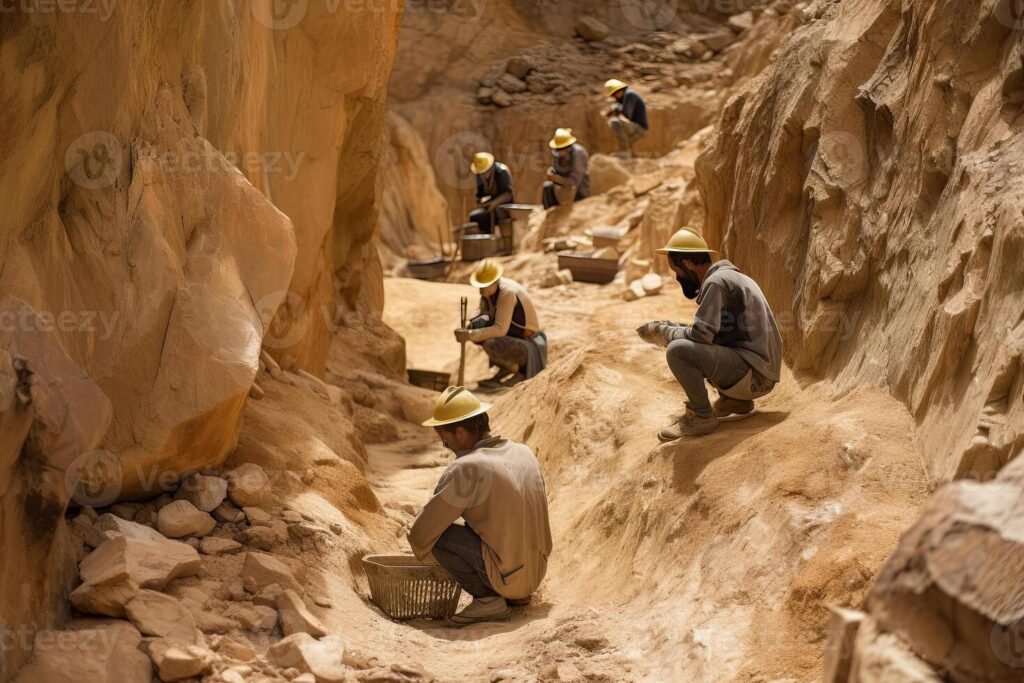Gold prospecting isn’t just about finding treasure; it’s about respecting the environment and ensuring sustainability. Whether you’re a seasoned prospector or a thrill-seeker looking to start your gold-digging adventure, understanding the principles of “adam dan tertib ketika mendulang emas” (order and discipline when panning for gold) is crucial. This guide will walk you through the best practices, benefits, and essential tips to make your gold prospecting both successful and environmentally friendly.
Why “Adam dan Tertib Ketika Mendulang Emas” Matters
Gold prospecting can be an exciting hobby or a profitable venture, but it’s essential to approach it with responsibility. “Adam dan tertib ketika mendulang emas” emphasizes the importance of order and discipline in this activity. Following these principles helps protect the environment, ensures safety, and promotes sustainable practices.
Environmental Impact
Panning for gold can have significant environmental consequences if not done correctly. Erosion, habitat destruction, and water pollution are common issues. By adhering to “adam dan tertib ketika mendulang emas,” prospectors can minimize their environmental footprint and help preserve natural habitats.
Safety Considerations
Gold prospecting often involves working in remote areas and handling equipment that can be dangerous if used improperly. Maintaining order and discipline ensures that safety protocols are followed, reducing the risk of accidents and injuries.
Sustainable Practices
Sustainability is another critical aspect of “adam dan tertib ketika mendulang emas.” Responsible gold prospectors use techniques that do not deplete resources or harm the environment, ensuring that future generations can also enjoy this activity.

Getting Started with Gold Prospecting
Before you head out to the riverbanks, it’s essential to prepare adequately. Here’s how you can get started with gold prospecting while adhering to “adam dan tertib ketika mendulang emas.”
Research and Permits
First and foremost, research the area where you plan to prospect. Make sure it’s legal to pan for gold there and obtain any necessary permits. Understanding local regulations is part of maintaining order and discipline.
Choosing the Right Equipment
Invest in quality equipment that is both effective and environmentally friendly. Basic tools include a gold pan, sluice box, and metal detector. Make sure your equipment is in good condition and suitable for the terrain you’ll be working in.
Planning Your Trip
Planning is crucial for a successful and safe gold prospecting trip. Inform someone about your plans, carry a detailed map, and make sure you have all the necessary supplies, including food, water, and first aid. Following these steps ensures you adhere to “adam dan tertib ketika mendulang emas.”
Techniques for Responsible Gold Prospecting
Now that you’re prepared, let’s explore some techniques that align with the principles of “adam dan tertib ketika mendulang emas.”
Panning
Panning is the most basic and environmentally friendly method of gold prospecting. It involves using a pan to separate gold from other materials in river sediments. This technique requires patience and practice but is highly effective and minimally invasive.
Sluicing
A sluice box is a more advanced tool that allows for higher volumes of material to be processed. While it can increase your chances of finding gold, it’s essential to use it responsibly. Make sure to set up your sluice box in a way that doesn’t cause erosion or disturb aquatic habitats.
Metal Detecting
Metal detecting is another popular method for finding gold nuggets. It’s less invasive than digging but requires skill and knowledge. Make sure to follow local regulations and always refill any holes you dig.
Best Locations for Gold Prospecting
Finding the right location is half the battle. Here are some tips for choosing the best spots for gold prospecting while adhering to “adam dan tertib ketika mendulang emas.”
Research Historical Data
Historical data can provide valuable insights into areas where gold has been found before. Libraries, online databases, and local historical societies are excellent resources for this information.
Test Multiple Locations
Don’t put all your eggs in one basket. Test multiple locations within your chosen area to increase your chances of finding gold. This approach also helps minimize environmental impact by spreading out your activities.
Respect Private Property
Always respect private property and seek permission before prospecting on someone’s land. Adhering to “adam dan tertib ketika mendulang emas” means respecting others’ rights and property.
Environmental Considerations
Environmental responsibility is a core component of “adam dan tertib ketika mendulang emas.” Here are some best practices to minimize your environmental footprint.
Minimizing Erosion
Erosion can cause significant environmental damage. Always refill your holes and avoid disturbing vegetation. Using a pan instead of heavy machinery also helps minimize erosion.
Protecting Aquatic Habitats
Rivers and streams are vital ecosystems that need to be protected. Avoid setting up your equipment in areas with delicate aquatic habitats and always follow local guidelines for responsible prospecting.
Reducing Pollution
Carry out all waste and avoid using harmful chemicals. Some prospectors use mercury to extract gold, but this practice is hazardous to both the environment and human health. Stick to safer, more sustainable methods.
Legal and Ethical Considerations
Understanding the legal and ethical aspects of gold prospecting is crucial for maintaining “adam dan tertib ketika mendulang emas.”
Obtaining Permits
Always obtain the necessary permits before you start prospecting. Failing to do so can result in fines and legal issues. Permits are typically required for both public and private lands.
Following Local Regulations
Each region has its own set of rules and regulations for gold prospecting. Make sure you are familiar with these laws and comply with them fully. This adherence is part of maintaining order and discipline.
Ethical Prospecting
Ethical prospecting involves more than just following the law. It means respecting the environment, local communities, and other prospectors. Leave no trace and always strive to leave the area better than you found it.
Building a Community
One of the joys of gold prospecting is being part of a community. Here’s how you can connect with fellow prospectors and contribute to the community.
Joining Clubs and Associations
Many regions have gold prospecting clubs and associations. Joining these groups can provide valuable resources, support, and camaraderie. It’s also a great way to learn more about “adam dan tertib ketika mendulang emas.”
Participating in Events
Gold prospecting events and competitions are excellent opportunities to meet like-minded individuals and test your skills. Participation helps you become a more skilled and responsible prospector.
Sharing Knowledge
Sharing your experiences and knowledge with others helps build a stronger, more responsible community. Whether through social media, blogs, or local meetups, your insights can inspire others to follow the principles of “adam dan tertib ketika mendulang emas.”
Education and Resources
To enhance your gold prospecting skills and adhere to ethical practices, continuous education is essential. Here are some valuable resources and methods to expand your knowledge.
Online Courses and Tutorials
Numerous platforms offer online courses and tutorials on gold prospecting techniques, equipment usage, and environmental responsibility. These resources can help you stay updated on best practices and new methods, ensuring you prospect safely and effectively.
Books and Guides
Consider investing in reputable books and guidebooks that cover various aspects of gold prospecting. Many authors share their in-depth knowledge about geology, methods, and locations, which can greatly enhance your understanding and success in the field.
Local Workshops and Seminars
Check for local workshops and seminars hosted by experienced prospectors or conservation organizations. These events provide excellent opportunities to learn directly from experts, engage with the community, and gain practical insights into responsible prospecting practices.
By continually educating yourself and engaging with others, you can refine your skills, make informed decisions, and contribute positively to the gold prospecting community while upholding the principles of “adam dan tertib ketika mendulang emas.”

Resources for Further Learning
Continuous learning is essential for staying informed and responsible. Here are some resources to help you deepen your knowledge.
Books and Guides
Several books and guides offer in-depth information on gold prospecting and responsible practices. Titles like “Fists Full of Gold” and “The Modern Goldseekers Manual” are excellent starting points.
Online Courses
Online courses and webinars can provide valuable insights and up-to-date information. Websites like Udemy and Coursera offer courses on gold prospecting and environmental responsibility.
Local Workshops
Check with local clubs and associations for workshops and training sessions. These hands-on opportunities can provide practical skills and knowledge that books and online courses can’t.
Responsible Equipment Usage
Using the right tools and equipment is crucial for effective and responsible gold prospecting. Understanding how to operate your gear properly not only increases your chances of success but also ensures minimal impact on the environment.
Choosing Sustainable Tools
Opt for tools that are environmentally friendly and efficient. For example, gold pans and classifiers are ideal for small-scale prospecting and create less disturbance compared to larger machinery. Always consider whether a tool is necessary and how it impacts the surrounding area.
Proper Maintenance of Equipment
Regular maintenance of your equipment can prolong its life and efficiency. Clean your tools after each use to prevent the spread of contaminants or pollutants to waterways. This practice also extends to proper disposal of any worn-out equipment, ensuring you do not contribute to waste.
Safety Practices
Safety should always be a top priority while prospecting. Use appropriate safety gear, such as gloves, hats, and sunscreen, to protect yourself from the elements. Additionally, ensure that your first aid kit is stocked and easily accessible during your outings.
By adopting responsible equipment usage practices, you contribute to a safe and sustainable gold prospecting environment while aligning with the principles of “adam dan tertib ketika mendulang emas.”
Conclusion
Gold prospecting is not just about the thrill of the hunt; it encompasses a deeper responsibility towards the environment, community, and ethical practices. By adhering to the principles of “adam dan tertib ketika mendulang emas,” you become a steward of nature while enjoying this rewarding activity. Whether you’re a seasoned prospector or a novice, the key lies in continuous education, respect for others, and a commitment to sustainable methods. As you embark on your gold prospecting journey, remember that every nugget found is an opportunity not only for personal gain but also for contributing positively to the community and preserving our natural landscapes for future generations.







